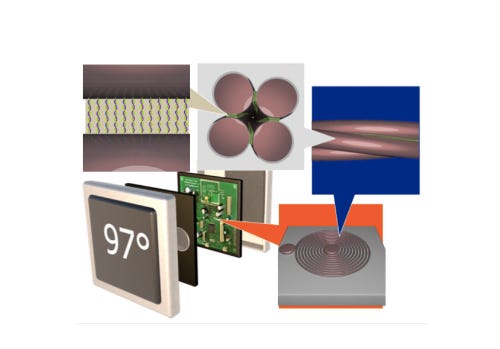New Nanoscale Materials Could Kick IoT into High Gear
February 18, 2016
Nanoscale hardware could open up more frequency spectrum for connected devices, according to Harvard University and Draper researchers. Could this be the key to a healthcare revolution?
Chris Newmarker
From better monitoring of chronic health conditions to keeping better track of home appliances and road traffic, the IoT holds a great deal of promise in coming years.
But before we can get there, we need enough frequency spectrum to connect all the assorted devices. That's where researchers at the Harvard John A. Paulson School of Engineering and Applied Sciences (SEAS) and nonprofit R&D company Draper come in. They're developing an approach that involves assembling nanoscale hardware able to generate and receive purer signals, thus reducing interference with other nearby transmissions.
This freed up spectrum would then reduce the need for space between frequencies as presently assigned by the Federal Communications Commission, Draper's Amy Duwel, technical director for the NanoLitz project, said in a news release.
NanoLitz is being funded by the Defense Advanced Research Projects Agency (DARPA) and the U.S. Air Force Research Laboratory. The NanoLitz strategy is to braid microscopic wires to reduce heat loss, improve efficiency, and sharpen filter response. So that the wires can operate at frequencies used in devices including smartphones, Harvard chemistry and materials science professor Roy Gordon has been developing techniques to make wires up to 1000 times smaller than those that are presently used.
The super-tiny wires will then be braided with techniques borrowed from MEMS and microfluidics. Draper is working on a microfluidics-inspired approach for mechanically braiding the tiny wires. The microfluidics approach would be scalable to large numbers of wire at high throughput. Draper is also leading the efforts to model and design the Nanolitz wire to optimize electrical performance.
Other work, led by Harvard chemical engineering and physics professor Vinothan Manoharan and applied mathematics and applied physics professor Michael Brenner, involves developing a DNA self-assembly method as a tool for manufacturing braids.
The goal is to enable devices to transmit up to five times more data per channel. Such devices would be able to receive much fainter signal levels, and overcome interference that disrupts GPS signals, said Draper's David Carter, NanoLitz program manager.
Continue>>
Learn more about cutting-edge medical devices at BIOMEDevice Boston, April 13-14, 2016. |
Chris Newmarker is senior editor of Qmed and MPMN. Follow him on Twitter at @newmarker.
Like what you're reading? Subscribe to our daily e-newsletter.
About the Author(s)
You May Also Like




.png?width=300&auto=webp&quality=80&disable=upscale)
